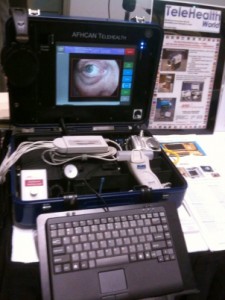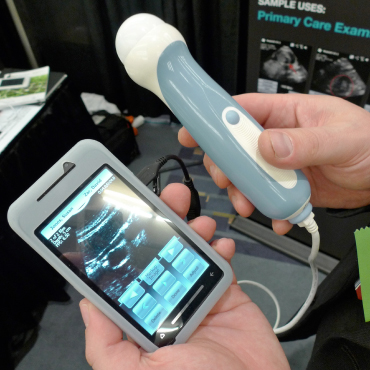An in-depth look at the latest trends in mobile health care, the technologies involved and the keys to privacy and security
by Anne Steciw, SearchhealthIT
Both consumers and physicians are beginning to tap into mobile health, one of the hottest health IT concepts. Some analysts believe the mobile health care market is poised for explosive growth and could be worth $1.7 billion by the end of 2014. IT leaders can benefit from strategic guidance and advice addresses the management and decision-making surrounding this area.
Mobile health, also known as mHealth, is a general term describing the use of mobile phones and other wireless technology in health care. Mobile health is a subset of Telehealth, with a particular emphasis on the use of mobile phones for communication between patients and health care providers. It also includes the use of wireless medical devices for monitoring patients remotely. Mobile health was one of the top health care tech trends of 2010. The majority of American adults use a cell phone, and many are using mobile devices to access health information online.
Messaging
One popular instance of mobile health care is using text messaging to send information and reminders to patients. For example, the US Department of Health & Human Services sends text messages with important health information and reminders to new and expectant mothers through its Text4baby mHealth program, which has over 100,000 participants enrolled. A mHealth trial program in Massachusetts used text messaging to remind pregnant women and substance abusers of appointments, care practices and other news.
Remote patient monitoring is another form of mobile health care involving devices that monitor patient health and then send the data electronically to a health care provider. Devices include a smart pill container that monitors and records when it has been opened and closed; wearable personal infrared sensors that will assess diet, exercise and overall physical activity, and an infrared sensor that measures air pollution.
Mobile health apps are another example. The U.S. government provides several mHealth apps — including a nutrition database and a UV index indicator — through its general mobile health application store for consumers.
An iPhone app for diabetic teens leverages their interest in social media to help make diabetes data monitoring an interactive, engaging daily activity. mHealth also takes place within the clinical setting. Health care professionals are using smartphones and other mobile devices to communicate with each other, to access electronic health records (EHRs) and to educate patients.
Technologies
 Smartphones and tablets are two of the most widely used devices in mobile health care. Research shows that 64% of doctors use iPhones or other smartphones, and the percentage is likely to rise in the future. The use of tablet PCs in health care is also on the rise, with many physicians looking to bring the iPad into health care workflows. The iPad isn’t the only game in town, however. Vendors are developing health care applications for a variety of mobile operating systems and devices, such as phones and tablets running the Android OS.
Smartphones and tablets are two of the most widely used devices in mobile health care. Research shows that 64% of doctors use iPhones or other smartphones, and the percentage is likely to rise in the future. The use of tablet PCs in health care is also on the rise, with many physicians looking to bring the iPad into health care workflows. The iPad isn’t the only game in town, however. Vendors are developing health care applications for a variety of mobile operating systems and devices, such as phones and tablets running the Android OS.
The Bluetooth 4.0 standard was designed to reduce the power drain of mobile devices and will enable wireless health care devices to port data straight into EHR systems. Medical radio frequency identification (RFID) is another mHealth technology being used in some hospitals to track items such as wheelchairs and intravenous pumps. Mobile health technologies require a robust health IT infrastructure and a healthy wireless network that can handle many devices at once.
Security and privacy
 Mobile health care communications are subject to the same HIPAA regulations as paper or fax communications. Health care apps that collect user information may also be subject to HIPAA regulations. To ensure compliance with HIPAA regulations, health care CIOs should secure the hospital wireless network by taking steps such as partitioning the network to keep patient data separate from guest activity and limiting guests to browser-based applications.
Mobile health care communications are subject to the same HIPAA regulations as paper or fax communications. Health care apps that collect user information may also be subject to HIPAA regulations. To ensure compliance with HIPAA regulations, health care CIOs should secure the hospital wireless network by taking steps such as partitioning the network to keep patient data separate from guest activity and limiting guests to browser-based applications.
Smartphones and tablets can be easily lost or stolen, making encryption one of the most important keys to mobile health security. Other key mHealth security measures include:
- performing a risk analysis
- using two-factor, bidirectional authentication
- creating and enforcing employee policies that prevent improper sharing of information
Health IT professionals should also focus on improving medical device security in a variety of methods, including establishing a backup plan in case a particular device goes down and staying in contact with medical device manufacturers.
 Since 2008, the Food and Drug Administration (FDA) has been contemplating deeper involvement in the regulation of medical devices. In 2011, the FDA released a set of recommendations for new medical device regulation and issued its first approval of a medical app for the iPhone.
Since 2008, the Food and Drug Administration (FDA) has been contemplating deeper involvement in the regulation of medical devices. In 2011, the FDA released a set of recommendations for new medical device regulation and issued its first approval of a medical app for the iPhone.
Barriers
One of the most significant barriers to mHealth adoption is the fee-for-service model of health care reimbursement, which makes it difficult for providers to get paid for mobile health care. On top of that, it can be difficult to get an accurate estimate of the cost for investing in mHealth technology.
A survey by Cisco Systems showed that other factors affecting mobile health adoption include a lack of technology funding, physician reluctance to change workflow and a lack of large-scale pilots demonstrating the effectiveness of mobile health.
Another barrier to mobile health adoption is the lack of high-speed Internet connections in many rural or underserved areas in the United States. The federal government has established a National Broadband Plan to help address this issue and to encourage the adoption of mobile health technologies.

